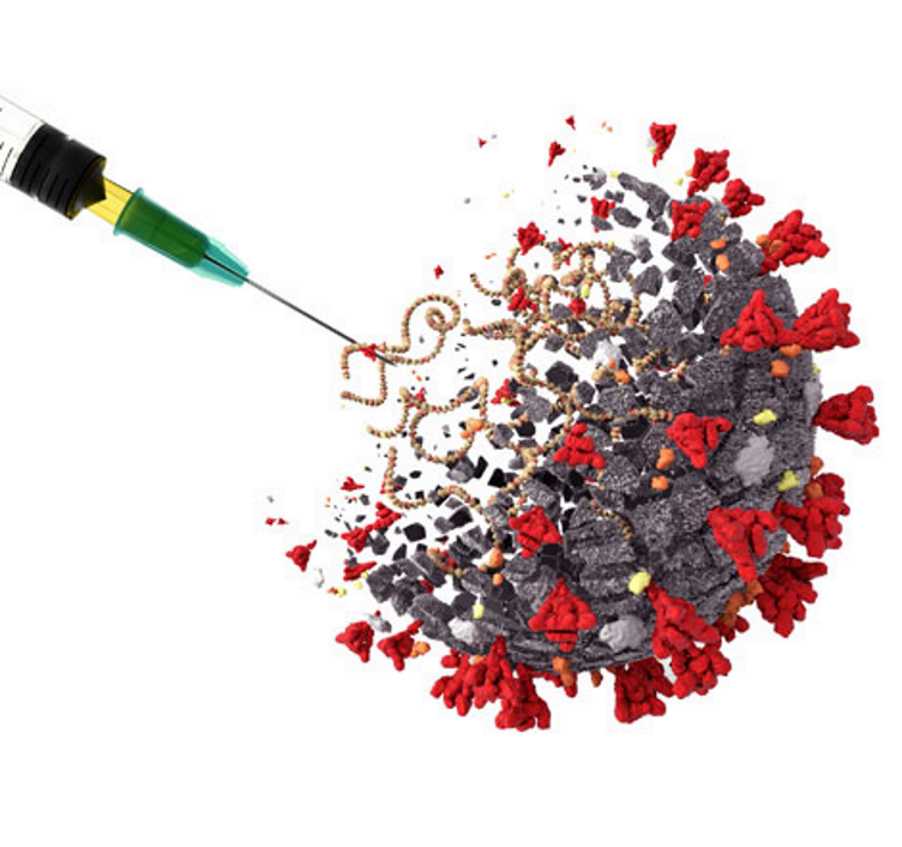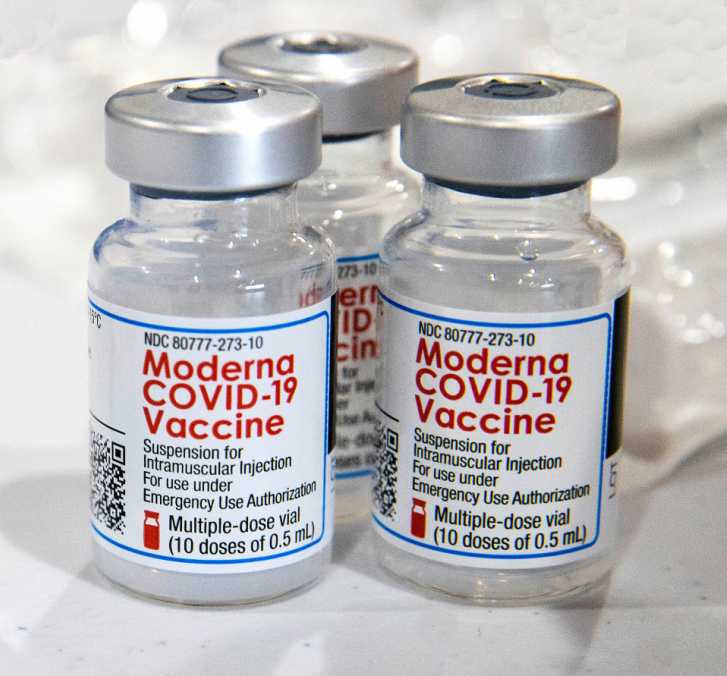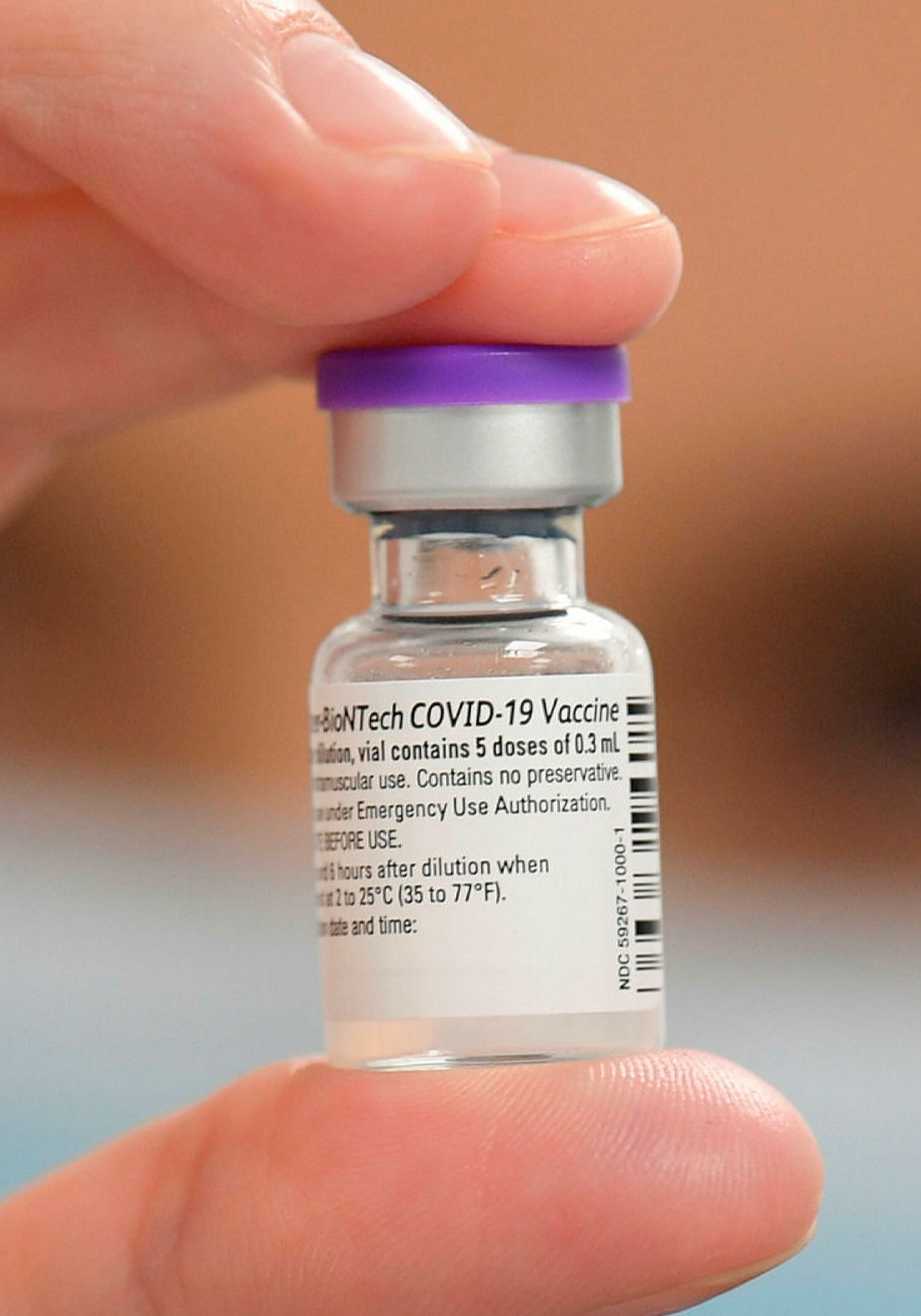
April, 2021
Radically new mRNA driven Covid-19 vaccines including the Pfizer-BioNTech and Moderna versions have been developed and bought to market after unprecidented and extraordinarliy brief periods.
There is little point in saying to anyone, have you done your research prior to offering yourself up for a Covid vaccination because we are the research!
In 2020 Moderna’s stock skyrocketed by more than 430% due to investor excitement over its COVID-19 vaccine mRNA-1273 and despite the reality that Moderna does not have any other ready-for-market products.
Traditional vaccines comprise small doses of a disease causing organism. Some Covid-19 vaccinations employ a never been used before vaccine technology known as mRNA (messenger ribonucleic acid) which tricks the body into producing some of the viral proteins itself.
Rejigit is of the view that those contemplating lining up for a Covid-19 vaccination should regard the current front runners as experimental biotechnology.
The timely and impressive article below was penned by Derek Thompson and was published in The Atlantic magazine issue dated 29 March 2021.

Derek is a staff writer for New York based The Atlantic, where he writes about economics, technology, and the media. He is the author of Hit Makers and the host of the podcast Crazy/Genius.
mRNA’s (messenger ribonucleic acid) story likely will not end with COVID-19: Its potential stretches far beyond this pandemic.
Synthetic mRNA, the ingenious technology behind the Pfizer-BioNTech and Moderna vaccines, might seem like a sudden breakthrough, or a new discovery. One year ago, almost nobody in the world knew what an mRNA vaccine was, for the good reason that no country in the world had ever approved one. Months later, the same technology powered the two fastest vaccine trials in the history of science.
Like so many breakthroughs, this apparent overnight success was many decades in the making. More than 40 years had passed between the 1970s, when a Hungarian scientist pioneered early mRNA research, and the day the first authorized mRNA vaccine was administered in the United States, on December 14, 2020. In the interim, the idea’s long road to viability nearly destroyed several careers and almost bankrupted several companies.
The dream of mRNA persevered in part because its core principle was tantalizingly simple, even beautiful: The world’s most powerful drug factory might be inside all of us.
https://www.theatlantic.com/health/archive/2021/03...
People rely on proteins for just about every bodily function; mRNA—which stands for messenger ribonucleic acid—tells our cells which proteins to make. With human-edited mRNA, we could theoretically commandeer our cellular machinery to make just about any protein under the sun. You could mass-produce molecules that occur naturally in the body to repair organs or improve blood flow. Or you could request our cells to cook up an off-menu protein, which our immune system would learn to identify as an invader and destroy.
In the case of the coronavirus that causes COVID-19, mRNA vaccines send detailed instructions to our cells to make its distinctive “spike protein.” Our immune system, seeing the foreign intruder, targets these proteins for destruction without disabling the mRNA. Later, if we confront the full virus, our bodies recognize the spike protein again and attack it with the precision of a well-trained military, reducing the risk of infection and blocking severe illness.
But mRNA’s story likely will not end with COVID-19: Its potential stretches far beyond this pandemic. This year, a team at Yale patented a similar RNA-based technology to vaccinate against malaria, perhaps the world’s most devastating disease. Because mRNA is so easy to edit, Pfizer says that it is planning to use it against seasonal flu, which mutates constantly and kills hundreds of thousands of people around the world every year. The company that partnered with Pfizer last year, BioNTech, is developing individualized therapies that would create on-demand proteins associated with specific tumors to teach the body to fight off advanced cancer. In mouse trials, synthetic-mRNA therapies have been shown to slow and reverse the effects of multiple sclerosis. “I’m fully convinced now even more than before that mRNA can be broadly transformational,” Özlem Türeci, BioNTech’s chief medical officer, told me. “In principle, everything you can do with protein can be substituted by mRNA.”
In principle is the billion-dollar asterisk. mRNA’s promise ranges from the expensive-yet-experimental to the glorious-yet-speculative. But the past year was a reminder that scientific progress may happen suddenly, after long periods of gestation. “This has been a coming-out party for mRNA, for sure,” says John Mascola, the director of the Vaccine Research Center at the National Institute of Allergy and Infectious Diseases. “In the world of science, RNA technology could be the biggest story of the year. We didn’t know if it worked. And now we do.”

1. The Long Road to Breakthrough
For more than 40 years, synthetic RNA couldn’t do anything useful. In 1978, Katalin Karikó was a young scientist at the Biological Research Centre in Szeged, Hungary, when she started working on the idea that it could. She left Hungary for the U.S. in the 1980s. At the University of Pennsylvania, she still struggled to design mRNA that the body did not immediately reject. When her research failed to attract the support of government grants and university colleagues, she was demoted.
After a decade of fits and starts, Karikó and her research partner Drew Weissman finally broke through in the early 2000s. To sneak synthetic mRNA past the cell’s defenses, they realized that they had to tweak one of its molecular building blocks, the nucleosides that comprise a strand of RNA. “The solution, Karikó and Weissman discovered, was the biological equivalent of swapping out a tire,” the journalists Damian Garde and Jonathan Saltzman wrote for the science website Stat.
https://www.theatlantic.com/ideas/archive/2020/03/...
In the U.S., the paper caught the attention of a brash group of postdoctoral researchers, professors, and venture capitalists. They started a company whose name smushed the words modified and RNA: Moderna. In Germany, Ugur Sahin and Özlem Türeci, a married couple with a background in immunotherapy research, also saw huge potential. They founded several companies, including one to research mRNA-based treatments for cancer: BioNTech.
“There was a lot of scepticism in the industry when we started, because this was a new technology with no approved products,” Türeci told me. “Drug development is highly regulated, so people don’t like to deviate from paths with which they have experience.” BioNTech and Moderna pressed on for years without approved products, thanks to the support of philanthropists, investors, and other companies. Moderna partnered with the NIH and received tens of millions of dollars from DARPA, the Defense Advanced Research Projects Agency, to develop vaccines against viruses, including Zika. In 2018, Pfizer signed a deal with BioNTech to develop mRNA vaccines for the flu.
“The technology initially appealed to us for the flu because of its great speed and flexibility,” Philip Dormitzer, who leads Pfizer’s viral-vaccines research and development programs, told me. “You can edit mRNA very quickly. That is quite useful for a virus like the flu, which requires two updated vaccines each year, for the Northern and Southern Hemisphere.”
By the time the coronavirus outbreak shut down the city of Wuhan, China, Moderna and BioNTech had spent years fine-tuning their technology. When the outbreak spread throughout the world, Pfizer and BioNTech were prepared to shift immediately and redirect their flu research toward SARS-CoV-2. “It was really a case of our researchers swapping the flu protein for the coronavirus spike protein,” Dormitzer said. “It turned out that it wasn’t that big a leap.”
Armed with years of mRNA clinical work that built on decades of basic research, scientists solved the mystery of SARS-CoV-2 with astonishing speed. On January 11, 2020, Chinese researchers published the genetic sequence of the virus. Moderna’s mRNA vaccine recipe was finalized in about 48 hours. By late February, batches of the vaccine had been shipped to Bethesda, Maryland, for clinical trials. Its development was accelerated by the Trump administration’s Operation Warp Speed, which invested billions of dollars in several vaccine candidates, including Moderna’s. With the perfect timing of a Hollywood epic, mRNA entered the promised land after about 40 wandering years of research. Scientific progress had proceeded at its typical two-speed pace—slowly, slowly, then all at once.
2. Faster, Faster!
Speed and nimbleness were the qualities that first interested both DARPA and Pfizer in mRNA. And if the technology unlocks more breakthroughs after this pandemic, speed and nimbleness will play starring roles.
Malaria kills more than 400,000 people every year, mostly young children. It is not caused by a virus or bacteria, but rather by an organism belonging to a separate phylum, called plasmodium. Plasmodia have a host of shape-shifting strategies to evade our immune systems. With most diseases, you catch it once and develop some protection going forward. But malaria shakes off our cellular defenses, making it possible to catch the disease over and over again. That also makes malaria hard to inoculate against: The only existing vaccine doesn’t work very well, even after a four-shot regimen.
https://www.theatlantic.com/magazine/archive/2021/...
Last month, a patent was approved for an RNA-based vaccine against malaria that showed promise in mice. “We’ve been working on this vaccine for years, but the entire landscape has changed in the last six months because of the success of COVID vaccines,” Richard Bucala, the vaccine’s co-inventor and a scientist at the Yale School of Medicine, told me.
The malaria vaccine uses self-amplifying RNA, or saRNA, which is subtly distinct from the mRNA technology used by Moderna and Pfizer. The vaccines against COVID-19 work by injecting up front all of the messenger RNA that you’re going to get. But self-amplifying RNA is designed to replicate itself inside our cells. This copy-paste function means, in theory, that each person needs only a tiny dose of vaccine to have a large immune response.
“The replication function of saRNA is critical, because it’s not vaccines that prevent infection but vaccinations that prevent infection,” Bucala said. A miracle drug that’s not administered is no better than a worthless medicine that’s never approved. “The Pfizer and Moderna vaccines need a lot of mRNA, and it’s expensive to make, which is why it’s been slower to get to many countries outside the U.S.,” he went on. “With saRNA, we could inject one-hundredth of the material to have the same effect. That would make it easier to scale against a widespread disease.”
Then there’s cancer. Scientists may never devise a single vaccine for cancer, because cancer is not a single disease but a constellation of more than 100 maladies, which we usually name for the place on the body where they originate. But what if we could respond to these hundreds of cancers with our own constellation of therapies that could train the body to attack a specific tumor?
This is the idea behind BioNTech’s cancer-immunotherapy research. It works something like this: For each cancer patient, BioNTech takes a tissue sample from a tumor to perform a genetic analysis. Based on that test, the company designs an individually tailored mRNA vaccine, which tells the patient’s cells to produce proteins associated with that specific tumor’s specific mutation. The immune system learns to search-and-destroy similar tumor cells throughout the body.
This cycle of analysis and design is not so different from the way BioNTech and Moderna swiftly analyzed Chinese scientists’ sequencing of SARS-CoV-2, identified the spike protein for attack, and made an effective therapy. “We hope that everything we’ve learned from COVID about producing and manufacturing mRNA can cross-fertilize the work on our off-the-shelf cancer treatments,” BioNTech’s Özlem Türeci told me. The company is currently in clinical trials for personalized vaccines in “basically every solid cancer,” she said, including melanoma, breast cancer, and ovarian cancer. A 2021 analysis by University of North Carolina researchers in the journal Molecular Cancer pointed out that these cancer treatments have been slow to develop in recent years but that the COVID-19 breakthrough coincided with “promising” clinical trials in cancer vaccines. “We envision the rapid advancing of mRNA vaccines for cancer immunotherapy in the near future,” they concluded.

3. We Make Our Own Luck
In March 2020, Peter Hotez, a vaccine scientist at Baylor College of Medicine, didn’t think that mRNA technology would win the race against COVID-19. His bet was on the pharmaceutical company Merck, which had recently developed an astonishingly successful vaccine against Ebola using a modified livestock virus called vesicular stomatitis virus, or VSV. But Merck discontinued its COVID-19 vaccines when its promising new technology failed in clinical trials.
Hotez sees Merck’s failures as a critical lesson about science—and a cautionary tale about mRNA.“The technology that works for one epidemic might not work for the next one, and you won’t know what works until you try it,” he told me. “That’s why I say it’s too soon to call mRNA vaccines a miracle. They might not work against the next target.”
Even mRNA’s biggest proponents concede the point. “This is not a magic bullet, and it’s not perfect for everything,” Pfizer’s Dormitzer told me. His partners at BioNTech concurred. “I do not claim that mRNA is the holy grail for everything,” Türeci said. “We are going to find that there are diseases where mRNA is surprisingly successful and diseases where it’s not. We have to prove it for each and every infectious disease, one by one.”
mRNA may not produce a great second act in the next decade, or ever. Perhaps the scientific establishment will conclude that the technology benefited in the pandemic from a uniquely simple nemesis. “The coronavirus might be one of the easiest vaccine targets we’ve seen in modern times,” Hotez agreed. “Just about everything we’ve thrown at it has worked.”
Maybe we got lucky. But luck is downstream from preparation. The coronavirus was an easy target only because science made it easy. Four years ago, following the outbreak of Middle East Respiratory Syndrome in the Arabian Peninsula and South Korea, 18 scientists from the NIH, Vanderbilt University, Dartmouth College, and other institutions published a detailed examination of the shape and behaviour of the coronavirus’s most notable feature: the spike protein. This paper decoded the mysteries and vulnerabilities of the virus long before anybody knew that this tiny pathogen would soon shut down the world. “Our studies,” they presciently concluded in their 2017 paper, “provide a foundation for the structure-based design of coronavirus vaccines.” Without this detective work, the mRNA breakthrough might not have happened.
Today’s vaccines were forged from science’s successes, but also from its failures. For decades, researchers have struggled to design a workable vaccine for HIV, and many observers considered this field a dead end. But a new paper argues that these repeated failures forced HIV-vaccine researchers to spend a lot of time and money on strange and unproven vaccine techniques—such as synthetic mRNA and the viral-vector technology that powers the Johnson & Johnson vaccine. Nearly 90 percent of COVID-19 vaccines that made it to clinical trials used technology that “could be traced back to prototypes tested in HIV vaccine trials,” Jeffrey E. Harris, the economist at MIT who authored the paper, wrote. He points out that if one HIV vaccine had succeeded, the company behind it would have won big. Instead, all of the competitors in the vaccine field learned from collective failure and contributed to collective wisdom. The many false starts of HIV vaccination sired an explosion of new technologies and helped usher in a possible new golden age of vaccines.
4. The Tree of Progress
We can call our record-breaking vaccine-development process good luck. Or we can call it what it really is: a ringing endorsement for the essential role of science in the world.
“Five years ago, we were in a state of ignorance about mRNA,” Mascola, of the NIH, told me. “And five years from now, we will learn that we are, at this very moment, in another state of ignorance. That’s why mRNA is such a beautiful scientific story. So many researchers, philanthropists, government organizations, and companies took a huge risk on a technology whose initial responses were marginal. And together, they figured out how to make it work.”
As a parable of scientific progress, I sometimes imagine the life cycle of a tree. Basic scientific research plants a variety of seeds. Some of these seeds fail entirely; the research goes nowhere. Some seeds become tiny shrubs; the research doesn’t fail entirely, but it produces little of value. And some seeds blossom into towering trees with abundant fruit that scientists, companies, and technologists pluck and turn into the products that change our lives. For years, mRNA technology looked like a shrub. In 2020, it blossomed in full view.
You cannot know in the early stages whether you’re planting a dud or a revolution. Even if it is a revolution, you cannot know what kind. Pfizer jumped into mRNA research for its potential to work against influenza, only to make history fighting a completely different virus. But this uncertainty risk is exactly why countries like the U.S. ought to encourage more basic science and highly novel research.
The triumph of mRNA, from backwater research to breakthrough technology, is not a hero’s journey, but a heroes’ journey. Without Katalin Karikó’s gruelling efforts to make mRNA technology work, the world would have no Moderna or BioNTech. Without government funding and philanthropy, both companies might have gone bankrupt before their 2020 vaccines. Without the failures in HIV-vaccine research forcing scientists to trailblaze in strange new fields, we might still be in the dark about how to make the technology work. Without an international team of scientists unlocking the secrets of the coronavirus’s spike protein several years ago, we might not have known enough about this pathogen to design a vaccine to defeat it last year. mRNA technology was born of many seeds.
The Atlantic's COVID-19 coverage is supported by a grant from the Chan Zuckerberg Initiative.